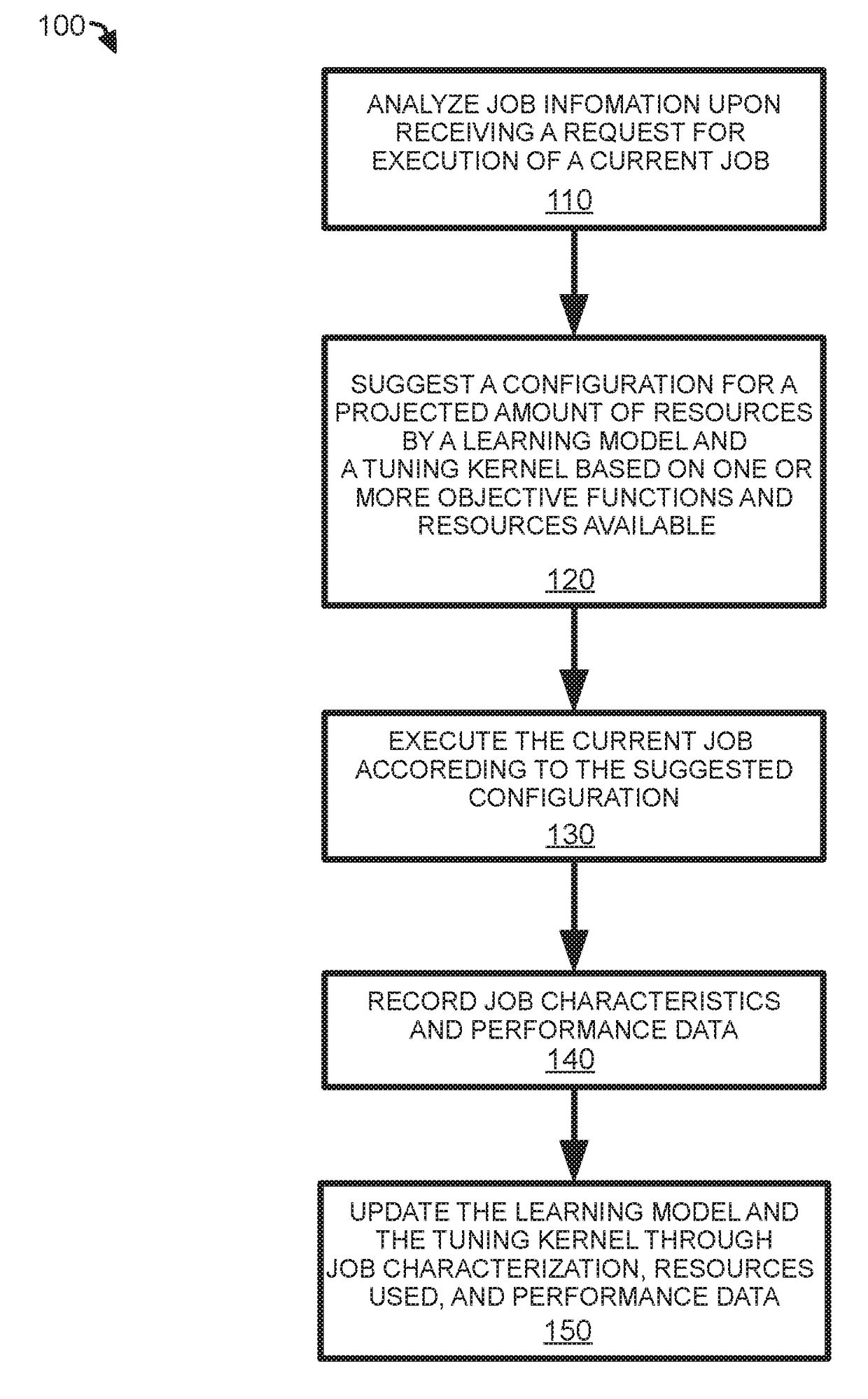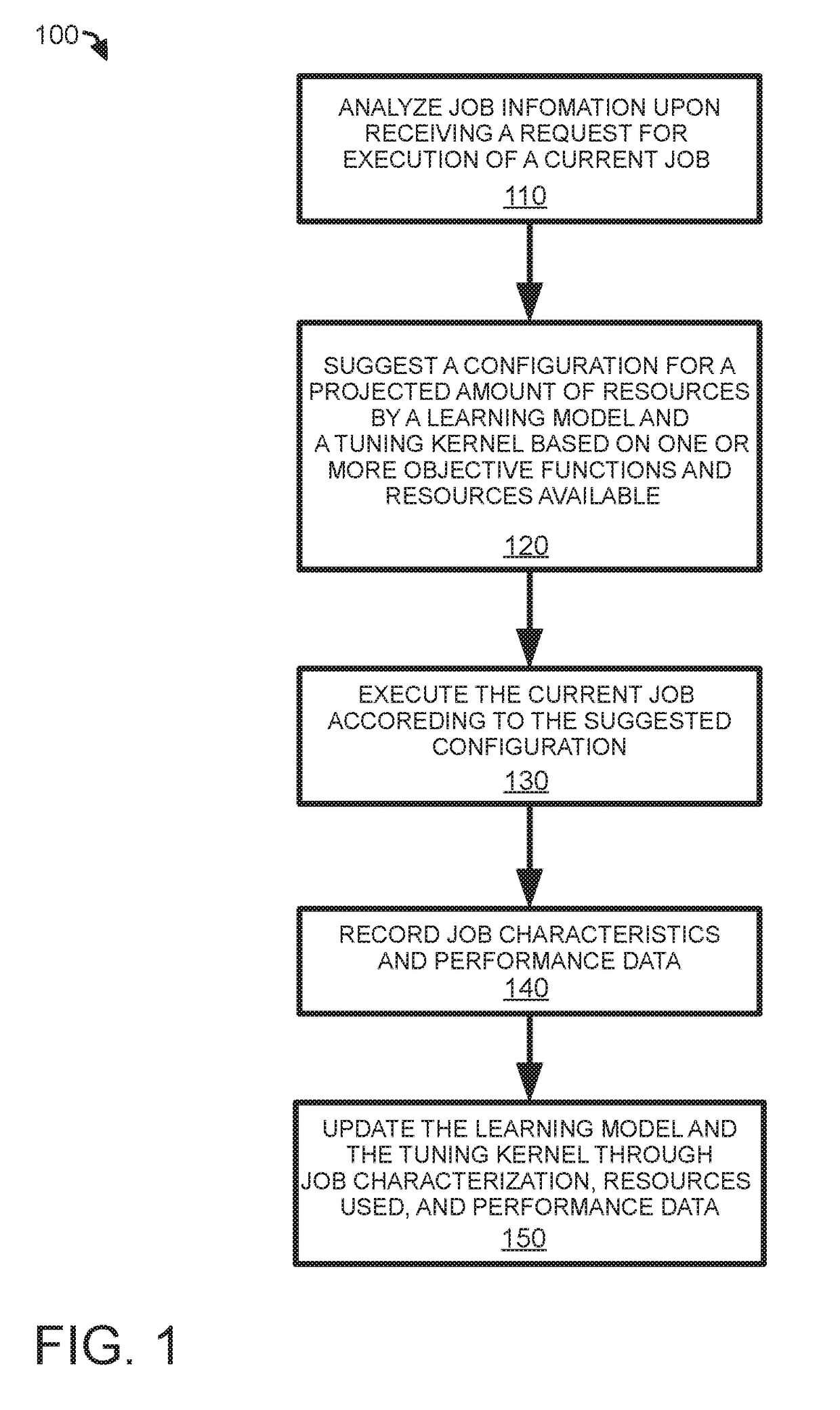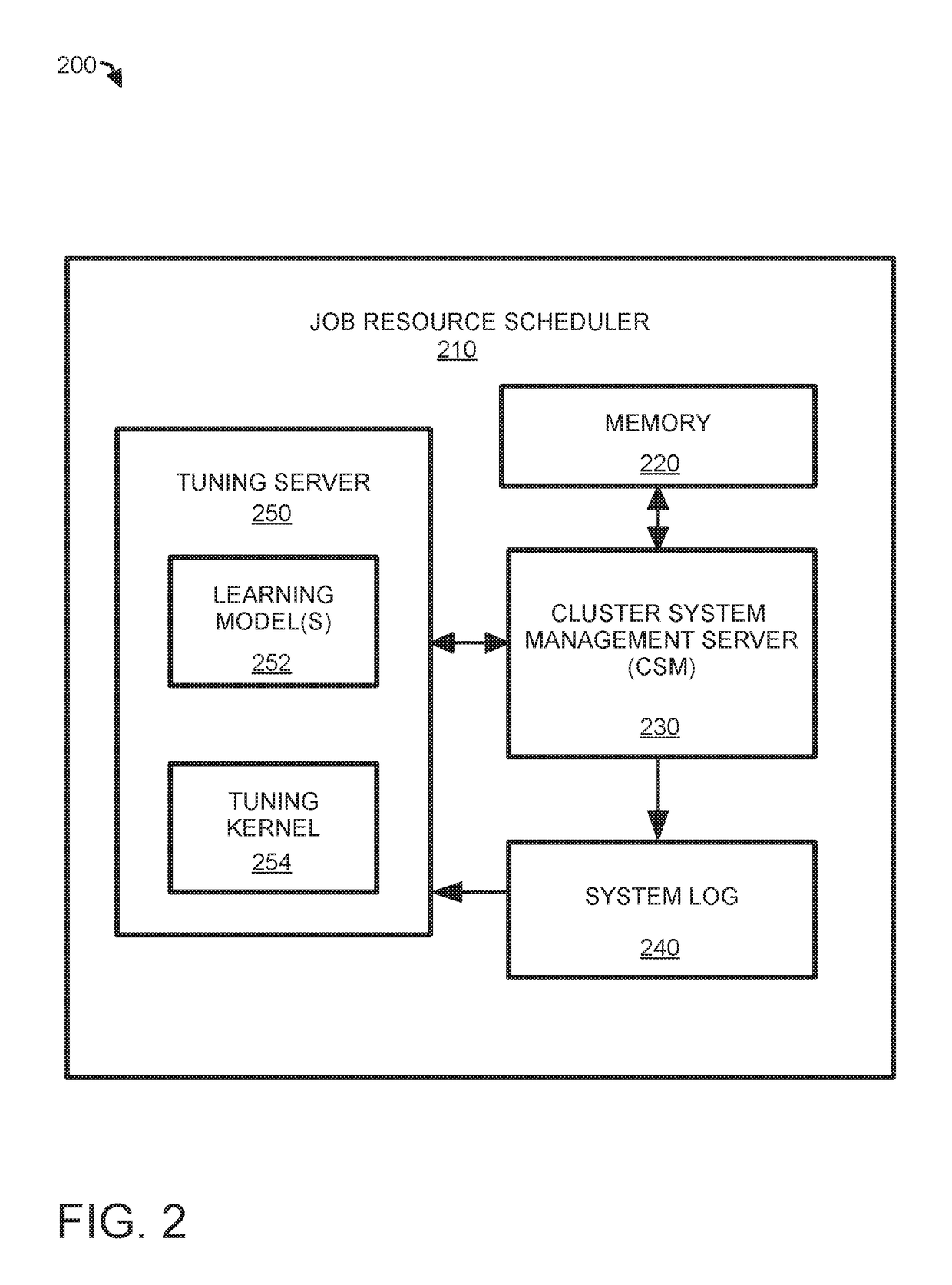Cognitive scheduler
- Summary
- Abstract
- Description
- Claims
- Application Information
AI Technical Summary
Benefits of technology
Problems solved by technology
Method used
Image
Examples
example flow
[0019]FIG. 1 is a block diagram of an example flow 100 illustrating various embodiments in accordance with the present disclosure. The example flow 100 may include one or more operations, actions, or functions as represented by one or more of blocks 110, 120, 130, 140, and 150. Although illustrated as discrete blocks, various blocks of flow 100 may be divided into additional blocks, combined into fewer blocks, or eliminated, depending on the desired implementation. Example flow 100 may be performed by a special-purpose machine (e.g., apparatus 200 to be described below) that is designed to perform specific tasks and functions pertaining to optimizing configuration for a projected amount of resources based on machine learning in accordance with the present disclosure.
[0020]The example flow 100 may represent a flow of allocating available resources for a job submitted for execution with a requested amount of resources. A submitted job may, for example and without limitation, have the ...
example implementation
[0028]FIG. 3 is a block diagram of an example implementation 300 illustrating the process of scheduling a plurality of jobs 320-330 to be executed on a cluster system 350 by a job resources scheduler 310, consistent with an embodiment of the present disclosure. In some embodiments, job resources scheduler 310 may be implemented in the form of hardware. In some other embodiments, job resources scheduler 310 may be implemented in the form of partial hardware and partial software. In alternative embodiments, job resource scheduler 310 may be implemented in the form of software. That is, in some cases, job resources scheduler 310 may be implemented in the form of electronic circuits with transistor(s), diode(s), capacitor(s), resistor(s), inductor(s), varactor(s) and / or memristor(s).
[0029]The job resource scheduler 310 may be an example implementation of the job resource scheduler 210. Therefore, detailed description above with respect to the job resource scheduler 210 applies to the jo...
example process
[0041]FIG. 7 depicts an example process 700 of classifying a job and allocating an amount of available resources for the jobs. Process 700 may be performed by a special-purpose machine (e.g., apparatus 200) that is designed to perform specific tasks and functions pertaining to optimizing configuration for a projected amount of resources based on machine learning in accordance with the present disclosure. Process 700 may include one or more operations, actions, or functions as represented by one or more of blocks 710, 711, 712, 720, 721, 722, and 723. Although illustrated as discrete blocks, various blocks of process 700 may be divided into additional blocks, combined into fewer blocks, or eliminated, depending on the desired implementation. Process 700 may be implemented by apparatus 200 and any variations and / or derivatives thereof. Process 700 may be an example implementation of process 400, whether partially or completely. For illustrative purposes and without limitation, process...
PUM
 Login to View More
Login to View More Abstract
Description
Claims
Application Information
 Login to View More
Login to View More - R&D
- Intellectual Property
- Life Sciences
- Materials
- Tech Scout
- Unparalleled Data Quality
- Higher Quality Content
- 60% Fewer Hallucinations
Browse by: Latest US Patents, China's latest patents, Technical Efficacy Thesaurus, Application Domain, Technology Topic, Popular Technical Reports.
© 2025 PatSnap. All rights reserved.Legal|Privacy policy|Modern Slavery Act Transparency Statement|Sitemap|About US| Contact US: help@patsnap.com



